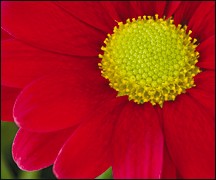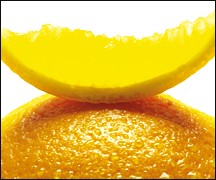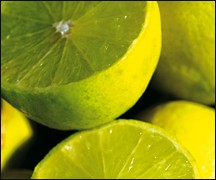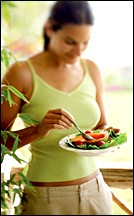 |
||
 |
||
|
|
|
Active Hydrogen
Adrenal Extracts
Alanine
Alpha-Linolenic Acid
Alpha-Lipoic Acid
AMP
Amylase Inhibitors
Arginine
Bee Pollen
Beta Carotene
Beta-glucan
Betaine
Beta-Sitosterol
Biotin
Borage Oil
Boron
Bovine Cartilage
Bovine Colostrum
Brewer's Yeast
Bromelain
Calcium
Capsaicin
Carnitine
Carnosine
Chitosan
Chloride
Chlorophyll
Chondroitin
Chromium
CLA
Cobalt
Coenzyme Q10
Copper
Creatine
Cysteine
DHA
DHEA
DMAE
EGCG
Evening Primrose Oil
5-HTP
Fiber (Insoluble)
Fiber (Soluble)
Fish Oil
Flavonoids
Fluoride
Folate
Fumaric Acid
GABA
Gamma-Linolenic Acid
Glucomannan
Glucosamine
Glutamic Acid
Glutamine
Glutathione
Glycine
Grape Seed Extract
Histidine
HMB
Hydroxycitric Acid
Indole
Inosine
Inositol
Iodine
Ipriflavone
Iron
Isoleucine
Lactase
Lecithin
Leucine
Lipase
Lutein
Lycopene
Lysine
Magnesium
Malic Acid
Manganese
Mannose
Melatonin
Methionine
Methoxyisoflavone
Molybdenum
MSM
N-Acetyl Cysteine
NADH
Naringin
Niacin
Octacosanol
Oligosaccharides
Olive Leaf Extract
Ornithine
Oryzanol
PABA
Pancreatic Enzymes
Pantothenic Acid
Phenylalanine
Phosphatidylserine
Phosphorus
Phytic Acid
Policosanol
Potassium
Pregnenolone
Probiotics
Propolis
Psyllium
Pyridoxine
Pyruvate
Quercetin
Resveratrol
Retinol
Riboflavin
Ribose
Royal Jelly
SAMe
Selenium
Shark Cartilage
Silicon
Sodium
Spirulina
Spleen Extracts
St. John's Wort
Strontium
Sulforaphane
Sulfur
Taurine
Thiamine
Tocopherol
Tea Tree Oil
Tyrosine
Usnic Acid
Valine
Vanadium
Vinpocetine
Vitamin A
Vitamin B1
Vitamin B2
Vitamin B3
Vitamin B5
Vitamin B6
Vitamin B9
Vitamin B12
Vitamin C
Vitamin D
Vitamin H
Vitamin K
Whey Protein
Xylitol
Zinc
Abalone Shell (shi jue ming)
Abutilon Seed (dong kui zi) Acanthopanax Bark (wu jia pi) Achyranthes (niu xi) Aconite (fu zi) Acorus (shi chang pu) Adenophora Root (nan sha shen) Agkistrodon (bai hua she) Agrimony (xian he cao) Ailanthus Bark (chun pi) Akebia Fruit (ba yue zha) Albizzia Bark (he huan pi) Albizzia Flower (he huan hua) Alfalfa (medicago sativa) Alisma (ze xie) Aloe (lu hui) Alum (bai fan) Amber (hu po) Ampelopsis (bai lian) Andrographis (chuan xin lian) Anemarrhena (zhi mu) Antelope's Horn (ling yang jiao) Apricot Seed (xing ren) Areca Peel (da fu pi) Areca Seed (bing lang) Arisaema (tian nan xing) Ark Shell (wa leng zi) Arnebia (zi cao or ying zi cao) Arnica (arnica montana) Artichoke Leaves (Cynara scolymus) Ash bark (qin pi) Ashwagandha (withania somniferum) Aster (zi wan) Astragalus (huang qi) Aurantium (zhi ke [qiao]) Bamboo Juice (zhu li) Bamboo Shavings (zhu ru) Belamcanda Rhizome (she gan) Benincasa Peel (dong gua pi) Benincasa Seed (dong gua xi/ren) Benzoin (an xi xiang) Bilberry (yue ju) Biota Leaf (ce bai ye) Biota Seed (bai zi ren) Bitter Melon (ku gua) Bitter Orange Peel (ju hong) Black Cohosh (sheng ma) Black Plum (wu mei) Black Sesame Seed (hei zhi ma) Bletilla (bai ji) Boneset (ze lan) Borax (peng sha) Borneol (bing pian) Bottle Brush (mu zei) Buddleia (mi meng hua) Buffalo Horn (shui niu jiao) Bulrush (pu huang) Bupleurum (chai hu) Burdock (niu bang zi) Camphor (zhang nao) Capillaris (yin chen hao) Cardamon Seed (sha ren) Carpesium (he shi) Cassia Seed (jue ming zi) Catechu (er cha) Cat's Claw (uncaria tomentosa) Cephalanoplos (xiao ji) Celosia Seed (qing xiang zi) Centipede (wu gong) Chaenomeles Fruit(mu gua) Chalcanthite (dan fan) Chebula Fruit (he zi) Chinese Gall (wu bei zi) Chinese Raspberry (fu pen zi) Chrysanthemum (ju hua) Cibotium (gou ji) Cinnabar (zhu sha) Cinnamon (rou gui or gui zhi) Cistanche (rou cong rong) Citron (xiang yuan) Citrus Peel (chen pi) Clam Shell (hai ge ke/qiao) Clematis (wei ling xian) Cloves (ding xiang) Cnidium Seed (she chuang zi) Codonopsis (dang shen) Coix Seed (yi yi ren) Coptis (huang lian) Cordyceps (dong chong) Coriander (hu sui) Corn Silk (yu mi xu) Cornus (shan zhu yu) Corydalis (yan hu suo) Costus (mu xiang) Cranberry (vaccinium macrocarpon) Cremastra (shan ci gu) Croton Seed (ba dou) Curculigo (xian mao) Cuscuta (tu si zi) Cuttlefish Bone (hai piao xiao) Cymbopogon (xiang mao) Cynanchum (bai qian) Cynomorium (suo yang) Cyperus (xiang fu) Dalbergia (jiang xiang) Damiana (turnera diffusa) Dandelion (pu gong ying) Deer Antler (lu rong) Dendrobium (shi hu) Devil's Claw (harpagophytum procumbens) Dianthus (qu mai) Dichroa Root (chang shan) Dittany Bark (bai xian pi) Dong Quai (tang kuei) Dragon Bone (long gu) Dragon's Blood (xue jie) Drynaria (gu sui bu) Dryopteris (guan zhong) Earthworm (di long) Eclipta (han lian cao) Elder (sambucus nigra or sambucus canadensis) Elsholtzia (xiang ru) Ephedra (ma huang) Epimedium (yin yang huo) Erythrina Bark (hai tong pi) Eucalyptus (eucalyptus globulus) Eucommia Bark (du zhong) Eupatorium (pei lan) Euphorbia Root (gan sui or kan sui) Euryale Seed (qian shi) Evodia (wu zhu yu) Fennel (xiao hui xiang) Fenugreek (hu lu ba) Fermented Soybeans (dan dou chi) Flaxseed (ya ma zi) Fo Ti (he shou wu) Forsythia (lian qiao) Frankincense (ru xiang) Fritillaria (chuan bei mu) Gadfly (meng chong) Galanga (gao liang jiang) Galena (mi tuo seng) Gambir (gou teng) Gardenia (zhi zi) Garlic (da suan) Gastrodia (tian ma) Gecko (ge jie) Gelatin (e jiao) Genkwa (yuan hua) Germinated Barley (mai ya) Ginger (gan [sheng] jiang) Ginkgo Biloba (yin xing yi) Ginseng, American (xi yang shen) Ginseng, Asian (dong yang shen) Ginseng, Siberian (wu jia shen) Glehnia (sha shen) Glorybower (chou wu tong) Goldenseal (bai mao liang) Gotu Kola (luei gong gen) Green Tea (lu cha) Gymnema (gymnema sylvestre) Gynostemma (jiao gu lan) Gypsum (shi gao) Halloysite (chi shi zhi) Hawthorn (shan zha) Hemp Seed (huo ma ren) Homalomena (qian nian jian) Honey (feng mi) Honeysuckle Flower (jin yin hua) Honeysuckle Stem (ren dong teng) Houttuynia (yu xing cao) Huperzia (qian ceng ta) Hyacinth Bean (bai bian dou) Hyssop (huo xiang) Ilex (mao dong qing) Imperata (bai mao gen) Indigo (qing dai) Inula (xuan fu hua) Isatis Leaf (da qing ye) Isatis Root (ban lan gen) Java Brucea (ya dan zi) Jujube (da zao) Juncus (deng xin cao) Kadsura Stem (hai feng teng) Katsumadai Seed (cao dou kou) Kelp (kun bu) Knotweed (bian xu) Knoxia root (hong da ji) Kochia (di fu zi) Lapis (meng shi) Leech (shui zhi) Leechee Nut (li zhi he) Leonorus (yi mu cao) Lepidium Seed (ting li zi) Licorice (gan cao) Ligusticum (chuan xiong) Ligustrum (nč zhen zi) Lily Bulb (bai he) Limonite (yu liang shi) Lindera (wu yao) Litsea (bi cheng qie) Lobelia (ban bian lian) Longan (long yan hua [rou]) Lophatherum (dan zhu ye) Loquat Leaf (pi pa ye) Lotus Leaf (he ye) Lotus Node (ou jie) Lotus Seed (lian zi) Lotus Stamen (lian xu) Luffa (si gua luo) Lycium Bark (di gu pi) Lycium Fruit (gou qi zi) Lygodium (hai jin sha) Lysimachia (jin qian cao) Magnetite (ci shi) Magnolia Bark (hou po) Magnolia Flower (xin yi hua) Maitake (grifola frondosa) Marigold (c. officinalis) Massa Fermentata (shen qu) Milk Thistle (silybum marianum) Millettia (ji xue teng) Mint (bo he) Mirabilite (mang xiao) Morinda Root (ba ji tian) Mugwort Leaf (ai ye) Mulberry Bark (sang bai pi) Mulberry Leaf (sang ye) Mulberry Twig (sang zhi) Mullein (jia yan ye) Musk (she xiang) Myrrh (mo yao) Notoginseng (san qi) Notopterygium (qiang huo) Nutmeg (rou dou kou) Oldenlandia (bai hua she she cao) Omphalia (lei wan) Onion (yang cong) Ophicalcite (hua rui shi) Ophiopogon (mai dong) Oroxylum Seed (mu hu die) Oryza (gu ya) Oyster Shell (mu li) Passion Flower (passiflora incarnata) Patrinia (bai jiang cao) Pau D'Arco (tabebuia avellanedae) Peach Seed (tao ren) Pearl (zhen zhu [mu]) Perilla Leaf (su ye) Perilla Seed (su zi) Perilla Stem (su geng) Persimmon (shi di) Pharbitis Seed (qian niu zi) Phaseolus (chi xiao dou) Phellodendron (huang bai) Phragmites (lu gen) Picrorhiza (hu huang lian) Pinellia (ban xia) Pine Knots (song jie) Pipe Fish (hai long) Plantain Seed (che qian zi) Platycodon (jie geng) Polygala (yuan zhi) Polygonatum (huang jing) Polyporus (zhu ling) Poppy Capsule (ying su qiao) Poria (fu ling) Prickly Ash Peel (hua jiao) Prinsepia Seed (rui ren/zi) Prunella (xia ku cao) Prunus Seed (yu li ren) Pseudostellaria (tai zi shen) Psoralea (bu gu zhi) Pueraria (ge gen) Pulsatilla (bai tou weng) Pumice (fu hai shi) Pumpkin Seed (nan gua zi) Purslane (ma chi xian) Pyrite (zi ran tong) Pyrrosia Leaf (shi wei) Quisqualis (shi jun zi) Radish (lai fu zi) Realgar (xiong huang) Red Atractylodes (cang zhu) Red Clover (trifolium pratense) Red Ochre (dai zhe shi) Red Peony (chi shao) Red Sage Root (dan shen) Rehmannia (shu di huang) Reishi (ling zhi) Rhubarb (da huang) Rice Paper Pith (tong cao) Rose (mei gui hua) Rosemary (mi die xiang) Safflower (hong hua) Saffron (fan hong hua) Sandalwood (tan xiang) Sanguisorba Root (di yu) Sappan Wood (su mu) Sargent Gloryvine (hong teng) Saw Palmetto (ju zong lu) Schefflera (qi ye lian) Schisandra (wu wei zi) Schizonepeta (jing jie) Scirpus (san leng) Scopolia (S. carniolica Jacq.) Scorpion (quan xie) Scrophularia (xuan shen) Scutellaria (huang qin) Sea Cucumber (hai shen) Sea Horse (hai ma) Seaweed (hai zao) Selaginella (shi shang bai) Senna (fan xie ye) Shiitake (hua gu) Siegesbeckia (xi xian cao) Siler Root (fang feng) Slippery Elm (ulmus fulva) Smilax (tu fu ling) Smithsonite (lu gan shi) Sophora Flower (huai hua mi) Sophora Root (ku shen) Spirodela (fu ping) Stellaria (yin chai hu) Stemona (bai bu) Stephania (fang ji [han]) Sweet Annie (qing hao) Teasel Root (xu duan) Tiger Bone (hu gu) Torreya Seed (fei zi) Tortoise Plastron (gui ban) Tremella (bai mu er) Trichosanthes Fruit (gua lou) Trichosanthes Root (tian hua fen) Trichosanthes Seed (gua lou ren) Tsaoko Fruit (cao guo) Turmeric (jiang huang) Turtle Shell (bie jia) Tussilago (kuan dong hua) Urtica (xun ma) Uva ursi (arctostaphylos uva-ursi) Vaccaria Seed (wang bu lui xing) Valerian (jie cao) Veratrum (li lu) Viola (zi hua di ding) Vitex (man jing zi) Walnut (hu tao ren) Watermelon (xi gua) White Atractylodes (bai zhu) White Mustard Seed (bai jie ze) White Peony (bai shao) Wild Asparagus (tian men dong) Windmill Palm (zong lu pi/tan) Xanthium (cang er zi) Zedoary (e zhu) |
Dietary, Nutritional and Botanical Interventions to Reduce Pain and Inflammation
by Alex Vasquez, DC, ND Generally speaking, the allopathic/pharmaceutical paradigm of anti-inflammatory intervention is forced to be ineffective and dangerous by the very nature of the pharmaceutical agents that are relied upon. Since the vast majority of drugs are single molecules that intervene at a specific part of a complex inflammatory phenomena, the end result often is similar to throwing a monkey wrench into a machine that is malfunctioning – a single aspect of inflammation might be stopped, but the system continues to malfunction and might become even more imbalanced as a result of the so-called "intervention."
The failure of the coxibs exemplifies a major failure of the drug paradigm; namely that excessive focus on the inhibition of isolated pathways creates additional imbalance due to its failure to appreciate the multifaceted and interconnected nature of physiologic systems and biochemical pathways. On the contrary, our holistic perspective holds that inflammation is most effectively treated by focusing not on isolated pathways per se, but on the patient's overall health. Using an effective'overall approach allows specific pathways to be nutritionally supported and modulated, rather than pharmacologically inhibited. In other words, whereas anti-inflammatory drugs are specific and inhibitory of normal function, the natural approach is more general and supportive of optimal function. How can clinicians orchestrate a practical nutritional wellness protocol that specifically alleviates pain and inflammation? If you've read the first two articles of this series ("A Five-Part Nutritional Wellness Protocol That Produces Consistently Positive Results," Sept. 2005, and "Implementing the Five-Part Nutritional Wellness Protocol for the Treatment of Various Health Problems," Nov. '05), then you already know how to implement my five-part nutritional wellness protocol, and you already have a sense for how powerful these basic interventions can be. In essence, we start by getting the pro-inflammatory junk out of the diet, because we realize that high-fat and high-carb meals are pro-inflammatory.
References
|
Nutritional Wellness News Update:

Other Alternative Health Sites
Toyour Health
ChiroWeb
ChiroFind
Dynamic Chiropractic
DC Practice Insights
Acupuncture Today
Massage Today
Naturopathy Digest
Chiropractic Research Review
Spa Therapy
|


 Of course, the most recent – and most tragic – example of this iatrogenesis is the recent Cox-2-inhibitor (coxib) and Vioxx
catastrophe, which injured or killed more than 139,000
Americans.1 Any student of nutritional biochemistry could have anticipated the problems
years before these drugs caused their first deaths and
injuries.2 Indeed, the alarms were sounded within the first few years after the first coxibs were unleashed onto
the "health care" market,3 but these alarms were ignored in favor of the most
aggressive and successful drug-marketing campaign that the world had ever seen – one that made celecoxib/Celebrex the most successful drug launch in
U.S. history, with more than 7.4 million prescriptions written within its first
six months.4 The obvious problem with these drugs is that by targeting the Cox-2
enzyme, they block formation of prostacyclin, long considered "the good prostaglandin" due
to its vasodilatory and antithrombotic actions, which are cardioprotective.
Furthermore, any inhibition of cyclooxygenase tends to shunt arachidonic acid into the
formation of leukotrienes, which
promote painless inflammation and the acceleration of
cardiovascular disease.5
Of course, the most recent – and most tragic – example of this iatrogenesis is the recent Cox-2-inhibitor (coxib) and Vioxx
catastrophe, which injured or killed more than 139,000
Americans.1 Any student of nutritional biochemistry could have anticipated the problems
years before these drugs caused their first deaths and
injuries.2 Indeed, the alarms were sounded within the first few years after the first coxibs were unleashed onto
the "health care" market,3 but these alarms were ignored in favor of the most
aggressive and successful drug-marketing campaign that the world had ever seen – one that made celecoxib/Celebrex the most successful drug launch in
U.S. history, with more than 7.4 million prescriptions written within its first
six months.4 The obvious problem with these drugs is that by targeting the Cox-2
enzyme, they block formation of prostacyclin, long considered "the good prostaglandin" due
to its vasodilatory and antithrombotic actions, which are cardioprotective.
Furthermore, any inhibition of cyclooxygenase tends to shunt arachidonic acid into the
formation of leukotrienes, which
promote painless inflammation and the acceleration of
cardiovascular disease.5
 Once we've created some space for healthy foods, we encourage consumption
of anti-inflammatory foods such as low-carb, phytonutrient-rich fruits,
vegetables, nuts, seeds and berries. We correct general vitamin and mineral
insufficiencies with a multivitamin and multi-mineral supplement (which provides an
anti-inflammatory benefit6), and we ensure that the daily vitamin D requirement of
3,000-5,000 IU is met by ensuring daily full-body sun exposure or by using a
supplement that provides the appropriate
amount.7 We replace the
health-promoting fatty acids that are missing from the American diet by supplementing with
ALA, GLA, EPA and DHA, and we recommend probiotics to counteract the barrage of
antibiotics that most patients have had to endure during the course of their
viral infections, allergies, and other non-bacterial ailments. Weight loss and the attainment of optimal weight are the natural results of proper diet and
frequent exercise; adipose tissue is inherently
pro-inflammatory,8 and its "replacement" by lean muscle tissue (which is
anti-inflammatory9) helps shift the balance away from inflammation and toward homeostasis and healing. Up to
this point, we merely have turned off the gas lines that were fueling the
inflammatory fire; we have not yet done anything specifically anti-inflammatory per se.
By the time we've re-established the foundation for health, a large percentage
of patients already are healed of their primary ailments, and inflammation and
pain might be reduced significantly.
10
Once we've created some space for healthy foods, we encourage consumption
of anti-inflammatory foods such as low-carb, phytonutrient-rich fruits,
vegetables, nuts, seeds and berries. We correct general vitamin and mineral
insufficiencies with a multivitamin and multi-mineral supplement (which provides an
anti-inflammatory benefit6), and we ensure that the daily vitamin D requirement of
3,000-5,000 IU is met by ensuring daily full-body sun exposure or by using a
supplement that provides the appropriate
amount.7 We replace the
health-promoting fatty acids that are missing from the American diet by supplementing with
ALA, GLA, EPA and DHA, and we recommend probiotics to counteract the barrage of
antibiotics that most patients have had to endure during the course of their
viral infections, allergies, and other non-bacterial ailments. Weight loss and the attainment of optimal weight are the natural results of proper diet and
frequent exercise; adipose tissue is inherently
pro-inflammatory,8 and its "replacement" by lean muscle tissue (which is
anti-inflammatory9) helps shift the balance away from inflammation and toward homeostasis and healing. Up to
this point, we merely have turned off the gas lines that were fueling the
inflammatory fire; we have not yet done anything specifically anti-inflammatory per se.
By the time we've re-established the foundation for health, a large percentage
of patients already are healed of their primary ailments, and inflammation and
pain might be reduced significantly.
10
 For patients who need additional anti-inflammatory interventions and relief
from pain, now we can begin the implementation of
treatment, which is customized to the needs of the patient. For osteoarthritis, we can use the tried-and-true
glucosamine and purified chondroitin sulfates (note that purified chondroitin sulfate
is cardioprotective11), and now that a study has finally been published on the use
of MSM12 we can be confident that it works, even though we've been using it
successfully for years! For pain associated with inflammation and edema (i.e., recent
injury), proteolytic and pancreatic enzymes work well and work
quickly.13 If we are only treating pain (rather than that which is marked by significant inflammation) we can use
a combination of analgesic botanicals, namely devil's
claw (Harpagophytum
procumbens),14 Willow bark (Salix
spp)15 and Boswellia
serrata.16 If inflammation predominates
over pain, then we might choose to temporarily inhibit NF-kappaB with nutrients and
botanicals such as curcumin17 (requires piperine for absorption in
humans18), lipoic acid,19 green
tea,20 rosemary,21
propolis22 and resveratrol.23,24
For patients who need additional anti-inflammatory interventions and relief
from pain, now we can begin the implementation of
treatment, which is customized to the needs of the patient. For osteoarthritis, we can use the tried-and-true
glucosamine and purified chondroitin sulfates (note that purified chondroitin sulfate
is cardioprotective11), and now that a study has finally been published on the use
of MSM12 we can be confident that it works, even though we've been using it
successfully for years! For pain associated with inflammation and edema (i.e., recent
injury), proteolytic and pancreatic enzymes work well and work
quickly.13 If we are only treating pain (rather than that which is marked by significant inflammation) we can use
a combination of analgesic botanicals, namely devil's
claw (Harpagophytum
procumbens),14 Willow bark (Salix
spp)15 and Boswellia
serrata.16 If inflammation predominates
over pain, then we might choose to temporarily inhibit NF-kappaB with nutrients and
botanicals such as curcumin17 (requires piperine for absorption in
humans18), lipoic acid,19 green
tea,20 rosemary,21
propolis22 and resveratrol.23,24
 Somewhere along the way, when pain and inflammation particularly are severe
or recalcitrant, we need to consider that the inflammation might be being triggered
by an occult or "silent" infection,25,
26 and so we will need to assess and treat
the various foci of dysbiosis.27 Antimicrobial interventions can include
time-released oregano,28,29
berberine,30
artemisinin31,32
hyperforin33 myrrh (Commiphora
molmol),34 bismuth,35 peppermint, uva
ursi,36 thyme,37
clove,38 anise,39
buchu,40 caprylic acid,
dill,41 Brucea
javanica,42 and Acacia
catechu.43 The attainment of anti-rheumatic benefits
via the use of antimicrobial treatments, immunosupportive interventions (rather
than immuno-suppressive drugs), xenobiotic detoxification, and the correction of
hormonal imbalances is the leading edge of anti-inflammatory treatments for autoimmune
diseases and other disorders characterized by severe "idiopathic" inflammation.44
Somewhere along the way, when pain and inflammation particularly are severe
or recalcitrant, we need to consider that the inflammation might be being triggered
by an occult or "silent" infection,25,
26 and so we will need to assess and treat
the various foci of dysbiosis.27 Antimicrobial interventions can include
time-released oregano,28,29
berberine,30
artemisinin31,32
hyperforin33 myrrh (Commiphora
molmol),34 bismuth,35 peppermint, uva
ursi,36 thyme,37
clove,38 anise,39
buchu,40 caprylic acid,
dill,41 Brucea
javanica,42 and Acacia
catechu.43 The attainment of anti-rheumatic benefits
via the use of antimicrobial treatments, immunosupportive interventions (rather
than immuno-suppressive drugs), xenobiotic detoxification, and the correction of
hormonal imbalances is the leading edge of anti-inflammatory treatments for autoimmune
diseases and other disorders characterized by severe "idiopathic" inflammation.44
 Different health care professions are empowered and disabled by their
respective paradigms, and the merits of each can be contrasted by the results they obtain.
Here in America, drug-centered allopathic medicine, (which mislabels itself
"traditional medicine" even though it has existed for only 60 of the 2.5 million years of
human history) is the third or fourth leading cause of death, responsible for more than
1 million iatrogenic injuries and approximately 180,000 unnecessary deaths per
year.45-47 The American medical system also is the most expensive and inefficient "health
care" system in the world, and it burdens and bankrupts our families, businesses, and
communities48-52 while drug companies enjoy record-breaking multi-billion dollar
profits.53-55 Summarizing the situation in 2000, the Director of World Health
Organization's Global Program on Evidence for Health Policy, Christopher Murray, MD,
PhD,56 concluded, "Basically, you die earlier and spend more time disabled if you're
an American rather than a member of most other advanced countries." In contrast,
a lifestyle of healthy living that includes meditation, yoga, herbal dietary
supplements, and a whole foods diet can reduce total medical expenses by 59% over
four years and by 63% over 11 years compared to patients under "conventional"
medical care; hospital admission rates are reduced 11.4-fold for cardiovascular disease,
3.3-fold for cancer, and 6.7-fold for mental health and substance
abuse.57 The nationwide coverage of chiropractic might save our healthcare system as much as $61 billion
per year58 and would reduce the number of deaths and injuries caused by medical and
surgical treatments.59-61 Thankfully, as the chiropractic profession continues to
increase its scope of practice, more and more Americans will be able to experience
true health – without lifelong medicalization – with the use of proper diets,
nutritional supplements, and treatments that focus on the cause of the problem, not
merely the symptoms.
Different health care professions are empowered and disabled by their
respective paradigms, and the merits of each can be contrasted by the results they obtain.
Here in America, drug-centered allopathic medicine, (which mislabels itself
"traditional medicine" even though it has existed for only 60 of the 2.5 million years of
human history) is the third or fourth leading cause of death, responsible for more than
1 million iatrogenic injuries and approximately 180,000 unnecessary deaths per
year.45-47 The American medical system also is the most expensive and inefficient "health
care" system in the world, and it burdens and bankrupts our families, businesses, and
communities48-52 while drug companies enjoy record-breaking multi-billion dollar
profits.53-55 Summarizing the situation in 2000, the Director of World Health
Organization's Global Program on Evidence for Health Policy, Christopher Murray, MD,
PhD,56 concluded, "Basically, you die earlier and spend more time disabled if you're
an American rather than a member of most other advanced countries." In contrast,
a lifestyle of healthy living that includes meditation, yoga, herbal dietary
supplements, and a whole foods diet can reduce total medical expenses by 59% over
four years and by 63% over 11 years compared to patients under "conventional"
medical care; hospital admission rates are reduced 11.4-fold for cardiovascular disease,
3.3-fold for cancer, and 6.7-fold for mental health and substance
abuse.57 The nationwide coverage of chiropractic might save our healthcare system as much as $61 billion
per year58 and would reduce the number of deaths and injuries caused by medical and
surgical treatments.59-61 Thankfully, as the chiropractic profession continues to
increase its scope of practice, more and more Americans will be able to experience
true health – without lifelong medicalization – with the use of proper diets,
nutritional supplements, and treatments that focus on the cause of the problem, not
merely the symptoms.